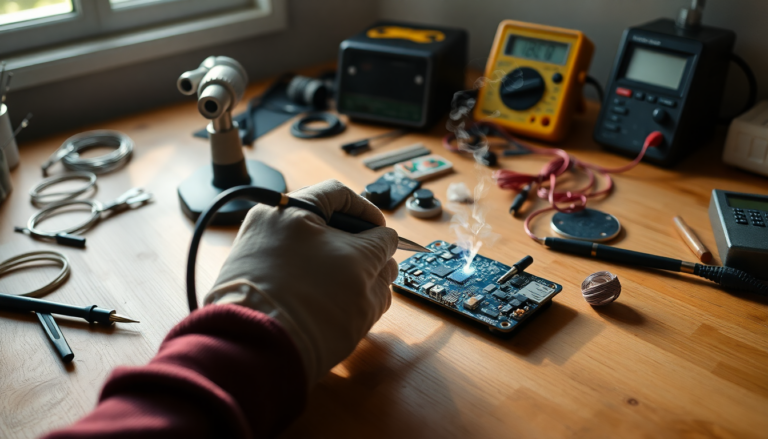Argomenti trattati
Are you ready to dive into the world of soldering? Whether you’re a complete novice or looking to brush up on your skills, soldering can be both thrilling and a bit intimidating. This essential technique is key in fields ranging from electronics to crafts, and mastering it can open the door to countless creative projects. With the right tools and a solid understanding of safety, you’ll be well-equipped to tackle any soldering challenge. Let’s explore some essential tips that every beginner should know to enhance their soldering experience.
Safety First: Protecting Yourself
Before we get into the nitty-gritty of soldering, let’s talk safety. Soldering irons can reach scorching temperatures, and a moment of carelessness can lead to burns or other injuries. So, how can you keep yourself safe while you work? Here are some key safety tips:
- Never touch the hot end: Soldering irons heat up quickly, and the last thing you want is a nasty burn. If you drop your soldering iron, resist the urge to catch it. Just let it fall and cool down safely.
- Maintain a clutter-free workspace: A tidy workspace is essential. Clutter can distract you and increase the risk of accidents. So, take a moment to clear your area of unnecessary items before you start.
- Position tools for easy access: Keep your soldering iron, solder, and other tools within arm’s reach. This will help you avoid awkward movements while you work.
- Avoid inhaling fumes: Soldering can produce harmful fumes, especially from the flux. Make sure your workspace is well-ventilated, and consider using a fume extractor to protect your lungs.
- Wear safety glasses: Protect your eyes from splashes of hot solder. A good pair of safety glasses is a simple yet effective way to prevent painful injuries.
Selecting the Right Tools
The success of your soldering projects hinges on the quality of your tools. Choosing the right soldering iron and accessories can greatly enhance your experience. So, what should every beginner have in their toolkit? Here are some must-haves:
- Choose an appropriate soldering iron: A soldering station with adjustable temperature settings is ideal for beginners. It allows you to handle various tasks effectively. Consider something versatile like the Yihua 938BD+, which is perfect for many projects.
- Select the right tips: Different soldering tasks require different tips. A conical tip works well for general use, while a chisel tip strikes a balance between heat and precision. Investing in a variety of tips prepares you for diverse soldering scenarios.
- Use high-quality flush cutters: After soldering components, you’ll want to cut the excess leads cleanly. A good pair of flush cutters, such as the Engineer NS-04 Micro Nippers, ensures neat finishes.
- Keep your soldering iron tip clean: A dirty tip can lead to poor soldering results. Regularly clean it using a damp sponge or a brass cleaner to maintain optimal performance.
- Choose the right solder: Familiarize yourself with both leaded and lead-free options. While lead-free solder is safer for the environment and often required for commercial products, it does require slightly different techniques.
Mastering the Soldering Process
Now that you’ve got your tools and safety measures sorted, it’s time to focus on the actual soldering process. What steps should you follow to ensure effective soldering? Here’s a straightforward guide:
- Set your temperature: A common working temperature is around 350°C. This heat level is sufficient for most tasks without risking damage to your components.
- Tin the tip: Before you start soldering, coat the tip of your iron with a small amount of solder. This not only aids heat transfer but also improves the quality of your solder joints.
- Heat the connection: Position the soldering iron tip on the joint you want to solder, and hold it there for a second or two to ensure it heats adequately.
- Apply solder: Once the joint is heated, introduce solder to it. You’ll see it flow around the connection, forming a solid joint.
- Inspect your joints: After soldering, take a moment to check your joints. A good joint should be smooth and shiny, free of gaps or excess solder.
By following these tips and techniques, you’ll be well on your way to becoming a proficient solderer. Remember, practice makes perfect! Don’t hesitate to experiment with different projects to refine your skills and boost your confidence. Happy soldering!

